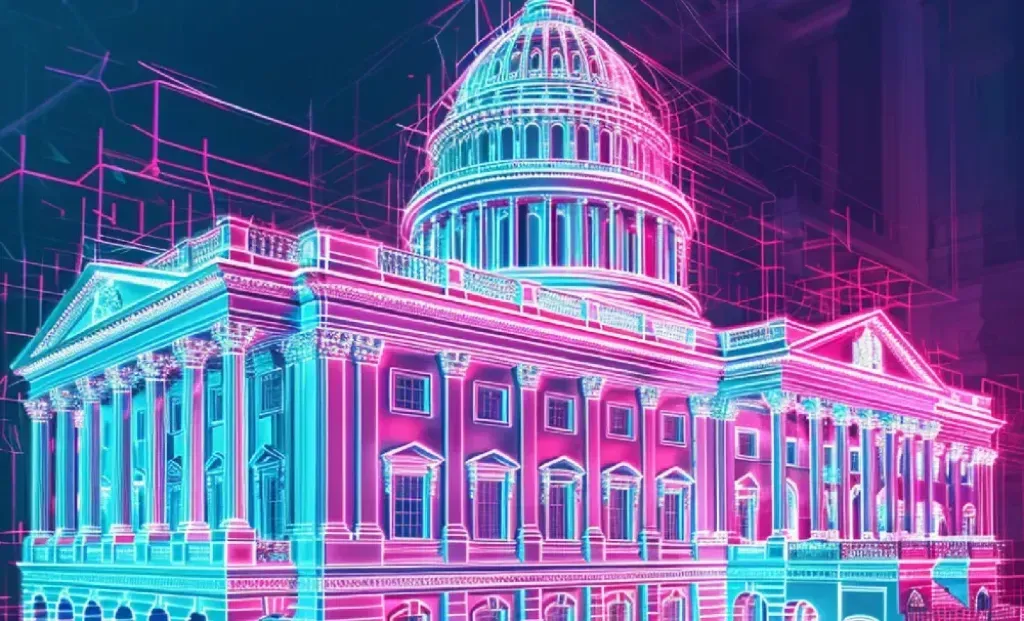
In a move that has sent shockwaves through both the tech industry and state governments, the U.S. House of Representatives has tucked a bold provision into its latest budget bill: a 10-year ban on states and localities regulating artificial intelligence. This proposal, if enacted, would reshape the landscape of AI governance in America for the next decade.
The Story Behind the Ban
Late-night negotiations in the House Energy and Commerce Committee led to the inclusion of this provision, which would prevent any state or local law from regulating AI models, systems, or automated decision-making tools. The tech industry, which has long lobbied for a single, predictable set of rules, sees this as a major win. For them, a patchwork of 50 different state laws could stifle innovation and make it harder to compete globally.
But not everyone is celebrating. State officials and many lawmakers are sounding the alarm, arguing that this move would tie the hands of local governments just as AI’s influence is rapidly expanding into everything from hiring decisions to election security.
Why a Federal Approach?
Supporters of the ban, including several prominent senators and tech leaders, argue that AI doesn’t respect state borders. They believe only the federal government can provide the consistency needed for businesses to thrive and for the U.S. to keep pace with international competitors. Sam Altman, CEO of OpenAI, testified that a patchwork of state regulations would be "burdensome" and could slow down progress.
Brad Smith, president of Microsoft, echoed this sentiment, suggesting that a period of federal leadership could help the industry grow, much like early internet commerce benefited from limited regulation.
State Pushback and Concerns
State leaders, however, see things differently. Many have already passed laws targeting specific AI risks, such as deepfakes in political campaigns. They argue that local governments are often the first to respond to emerging threats and that a federal ban would prevent them from protecting their citizens.
California State Senator Scott Wiener called the proposal "truly gross," highlighting the frustration among those who feel Congress has failed to act on meaningful AI regulation while also blocking states from stepping in.
A bipartisan group of state attorneys general has also voiced opposition, warning that a one-size-fits-all approach from Washington could leave states unable to address unique local challenges.
What Happens Next?
Despite its dramatic implications, the 10-year ban faces an uncertain future. The Senate’s procedural rules, particularly the Byrd Rule, may block its inclusion in the final bill. Even some senators who support a national framework for AI are unsure whether this sweeping preemption will survive the legislative process.
Meanwhile, the debate highlights a broader question: Who should lead on AI policy—states, with their ability to act quickly and locally, or the federal government, with its power to set nationwide standards?
Actionable Takeaways
- Stay informed: The landscape of AI regulation is changing rapidly. Businesses and individuals should keep an eye on federal and state developments.
- Engage with policymakers: If you have concerns or insights about AI’s impact, reach out to your representatives. Public input can shape the direction of future laws.
- Prepare for compliance: Regardless of the outcome, organizations should start assessing their AI systems for ethical risks and transparency, as regulation—federal or state—is likely on the horizon.
Summary: Key Points
- The House has proposed a 10-year ban on state and local AI regulation, aiming for a unified federal approach.
- Tech leaders support the move, citing the need for consistency and global competitiveness.
- State officials and attorneys general warn it could limit their ability to protect citizens from AI-related harms.
- The provision faces significant hurdles in the Senate and may not become law.
- The debate underscores the ongoing struggle over who should set the rules for AI in America.

